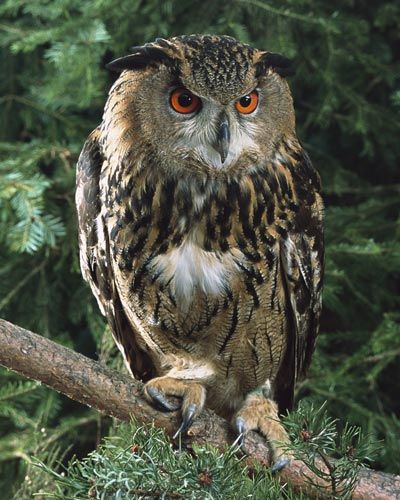
Owls are associated in legend with wisdom and with evil spirits. Superstition considers owls to be evil spirits forewarning of evil events. See a type of wading bird next.
Advertisement
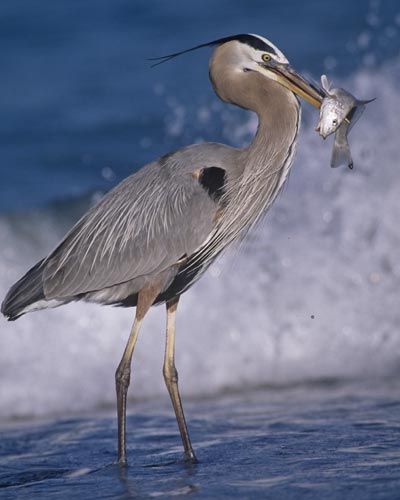
The great blue heron is a grayish-blue American species that stands 4 feet high and has a 6-foot wingspread. It ranges from southern Canada to Panama. Discover which bird species weaves nests of grasses and other substances next.
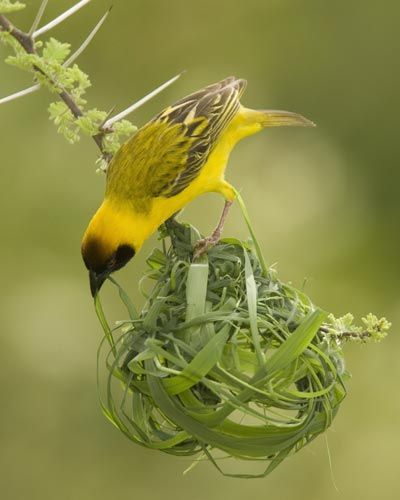
There are about 145 species of weaverbirds, including this masked weaver. Weavers are native chiefly to Africa, Australia and southern Asia. See a gruiforme that resembles the heron up next.
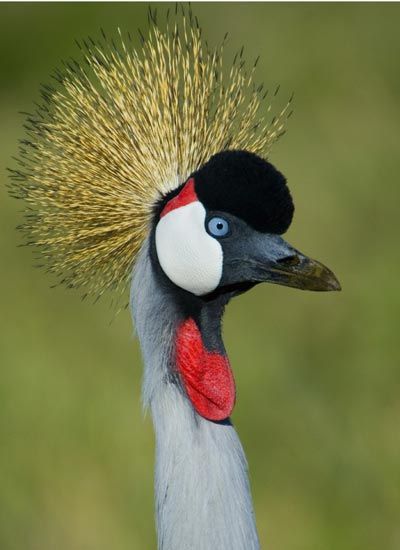
Cranes, like this Grey Crowned crane, resemble herons in flight, except that cranes fly with their necks outstretched, while herons curve their necks into an S shape. The next bird might remind you of a famous cartoon.
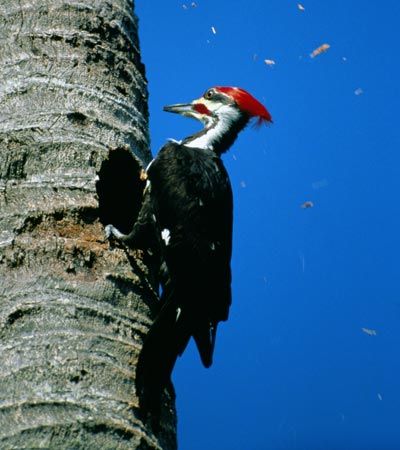
The woodpecker gets its name from the way it uses its bill to dig into trees for nesting and for food. There are more than 200 species of woodpeckers, 20 of them native to North America. Check out a bird looking to mate up next.
Advertisement

The prairie chicken is a North American game bird. During courtship, the male performs a dance and inflates brightly colored air sacs on its throat, causing tufts of neck feathers to stand up so that they resemble horns. Check out a "whalehead" next.
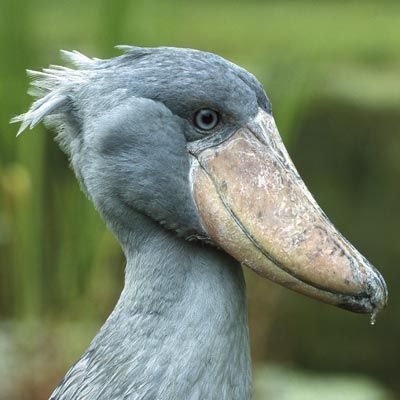
The shoebill or whalehead is a type of stork that has a large head with a huge, flattened bill that somewhat resembles a man's shoe. Which is the most common North American jay? Find out next.
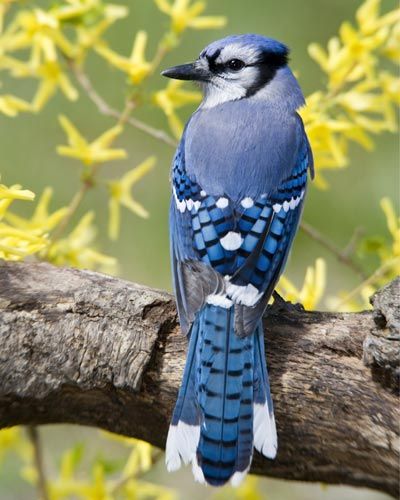
The blue jay inhabits the eastern and midwestern United States. There are about 45 species of jays in the world, half of which are found in North America. Do you know the state bird of Louisiana? Find out next.
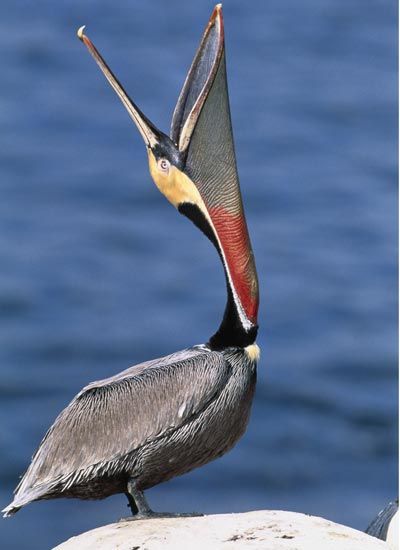
The pelican, like this brown pelican, is a type of water bird that has an expandable pouch attached to the lower portion of its bill, which it uses to catch fish. See a native to Andean cloud forests in the next picture.
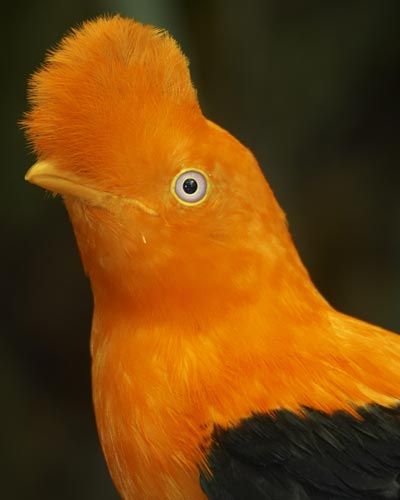
The cock of the rock is a bird native to tropical South America and is named for its habit of building its nest on top of rocks. The male is noted for his courtship dance, consisting of a series of hops. Find a bird related to the goose and swan next.
Advertisement

Ducks may be found on every continent, except Antarctica. This wood duck is considered the most beautiful of American waterfowl. The wood duck nests in hollow trees and has a plaintive whistling cry. See a scavenger bird looking for a meal next.
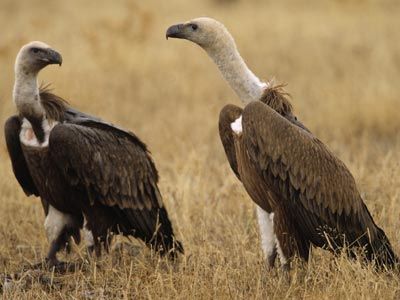
The vulture is a large bird of prey that feeds on decaying flesh, or carrion. This griffon vulture has a wingspan that can reach 10 feet and is one of the largest vultures. See a bird related to the ibis next up.

Spoonbills feed in shallow water by dipping their bills and swinging them from side to side, catching such food as crustaceans and small fish. This roseate spoonbill was hunted to near extinction, but is now protected by law. See another fisher next.
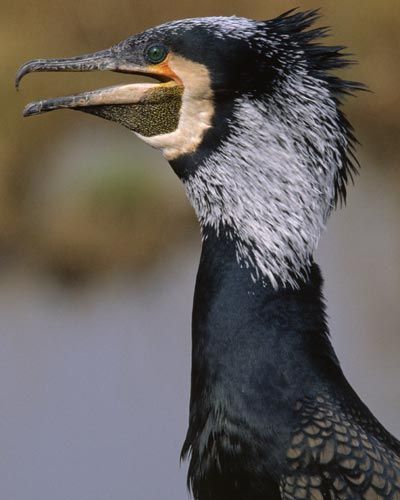
When the cormorant catches sight of its prey, it dives swiftly into the water. The bird uses its webbed feet and strong wings to propel itself beneath the surface. Chinese fishermen use tame cormorants to catch fish for them. See a flightless bird next.
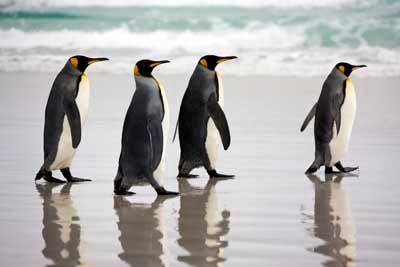
There are 17 species of penguins. A penguin colony may have thousands of members. In fact, a colony of these king penguins can have 200,000 pairs. Check out a tropical bird known for its colorful beak next.
Advertisement
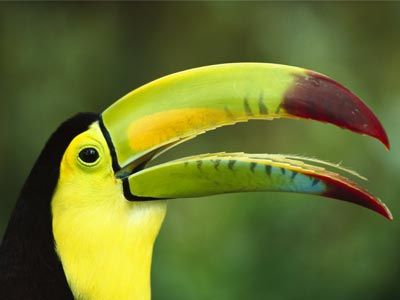
The toucan lives in the forests of Central and South America. The outstanding feature of these birds is their large, curved, multicolored bills. In some species the bill is almost as long as the body itself. See a bird known for its feathers next.
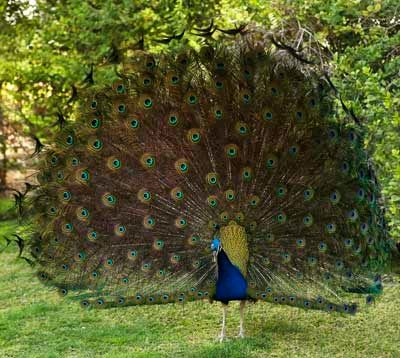
The peacock is a bird of the pheasant family, in which the males are noted for their display of brilliant plumage. The male's fan is made up of some 200 long feathers. See a bird called the "stinkbird" because of the strong, musty odor it emits next.
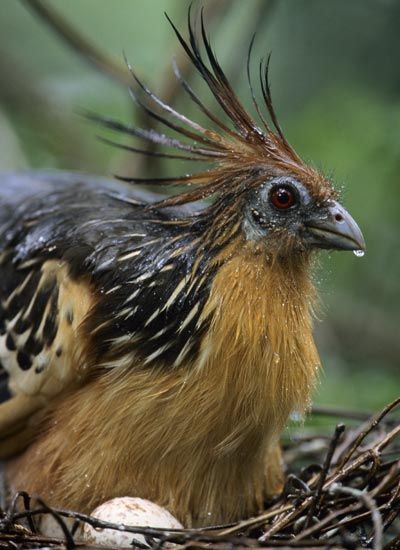
The hoatzin is a crested bird of tropical South America. Its upper plumage is dark brown flecked with white. The underparts and crest are reddish-brown. The bare skin on its face is blue. Find a bird having a snack next.
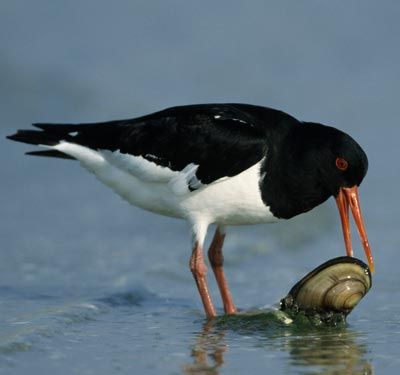
Oystercatchers feed mainly on bivalves, which they either pry open by inserting their wedgelike bill into the narrow opening between the shells or break open by hammering the shells with their bills. See a "flying jewel" next.
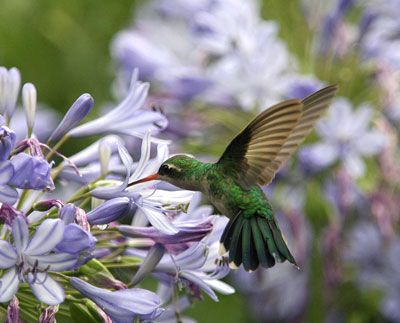
The hummingbird, which tops out at 20 grams, not only can fly on every axis, but can also hover in midair. Hummingbirds almost never stop moving, and they spend nearly all of their time in the air. See a state bird of 7 states next.
Advertisement
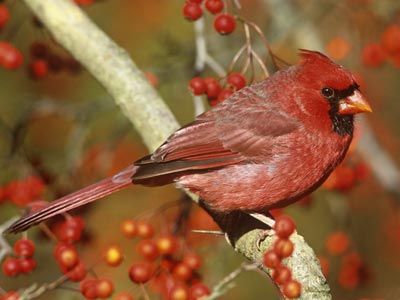
The cardinal, or "red bird" as it is popularly known in the southern states, is about 9 inches. The male has brilliant red plumage except for black face and neck feathers. Find a bird that is also a famous Looney Tunes character up next.
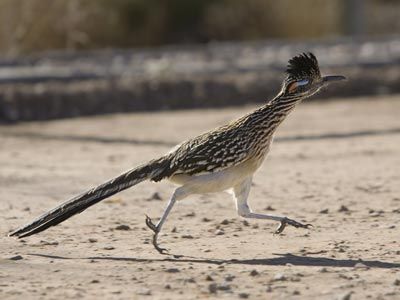
The roadrunner is a speedy ground bird of the southwestern United States and northern Mexico. The roadrunner eats lizards, snails, mice, snakes, insects and cactus fruits. Discover one of the largest flying birds in the following picture.
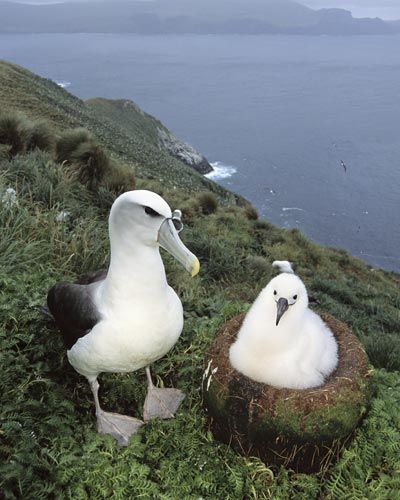
Albatrosses live almost their entire lives at sea, coming to land only to nest. Sailors often refer to albatrosses as "gooney birds" because of their disregard of danger. See the United States' national symbol next.
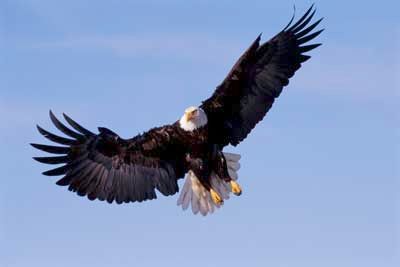
The eagle is a bird of prey belonging to the hawk family. Eagles have hooked beaks, curved talons, exceptionally keen eyesight, powerful wings and strong bodies. This bald eagle is protected by federal law. See the Baltimore state bird next up.
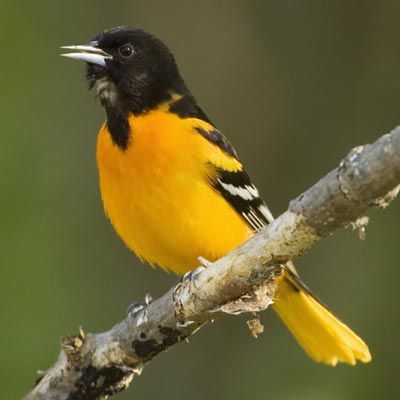
An oriole is the name of two different kinds of birds, an Old World and a New World kind. This Baltimore oriole is famous for its bright orange breast and is found in the eastern United States and southern Canada. See a symbol of love next.
Advertisement
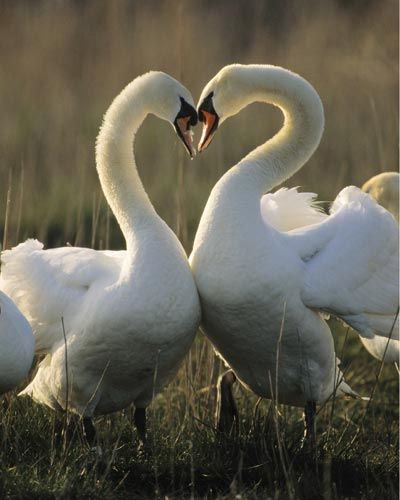
A swan begins its courtship by displaying to another swan. They will dip and turn their heads. Swans may also "kiss" bills, and when they do, their necks form a heart shape. Next up is a flightless bird from New Zealand.
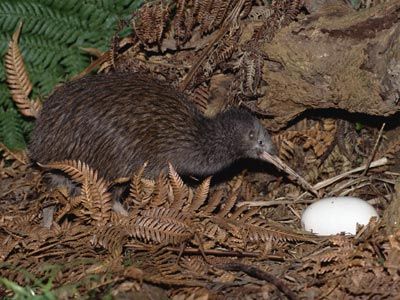
The kiwi is a flightless bird named for its shrill whistle. The kiwi is the only bird with nostrils at the tip of its bill. It also has strong, thick legs which it uses to dig burrows. See a bird that is only found in the Americas next.
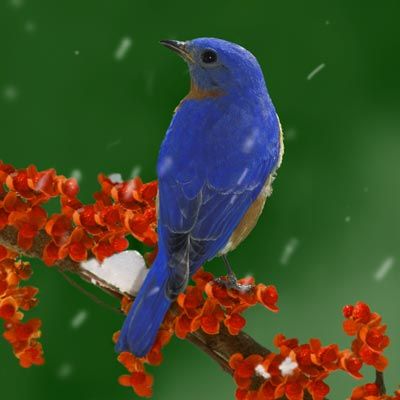
The bluebird is a small North American bird of the thrush family. Its cheerful warbling of cher-weet, cher-weet has made it one of the most beloved of songbirds. It is regarded as a symbol of happiness. See an African native next.
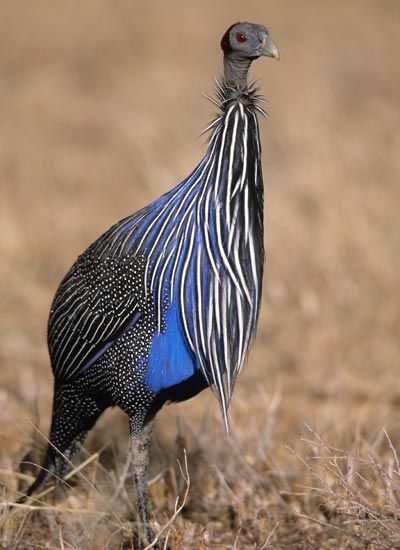
The guineafowl is a bird related to the pheasant. This vulturine guineafowl is the largest species and looks uncannily like a vulture with its bare head. See a bird of prey that lived on grassy plains in parts of Africa next.
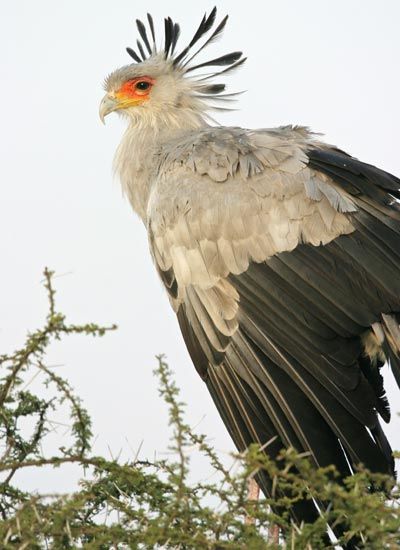
The secretary bird derives its name from its long crest feathers, which stick out from the back of its head somewhat like the quill pens that office workers once carried behind their ears. Find a small, plump and extremely active bird species up next.
Advertisement

There are over 350 known species of the wren. They live almost exclusively on insects and spiders. This Carolina wren is a versatile songster and blends the songs of other birds with its own. Which bird can fly in excess of 200 mph? Find out next.

Found on every continent except Antarctica, peregrine falcons are the most widespread bird in the world. The average bird travels 19 to 37 mph, but the peregrine falcon flies at rates between 40 and 60 mph. Finally, see the largest of all birds.
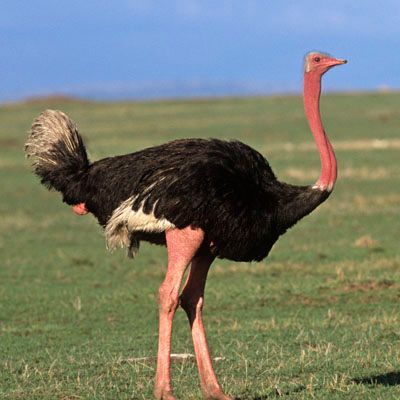
The ostrich forms the single remaining species in an ancient, primitive order of birds. This bird can grow 7 to 8 ft tall and can reach 300 lbs. To learn more about birds check out the Bird Channel.